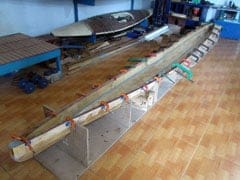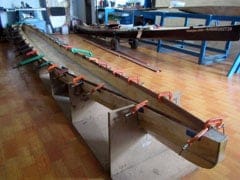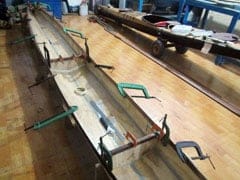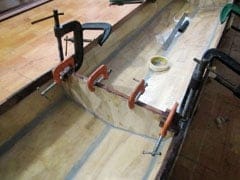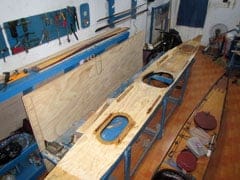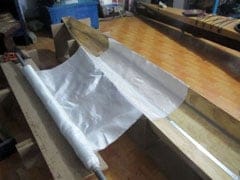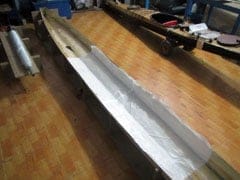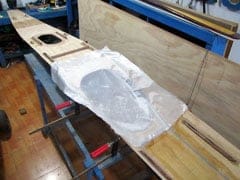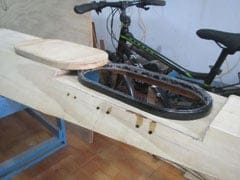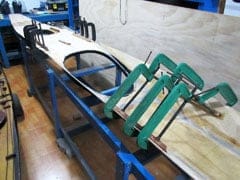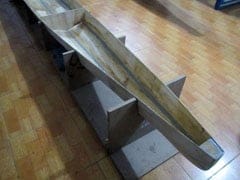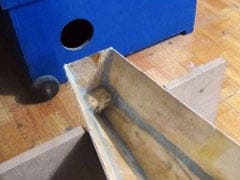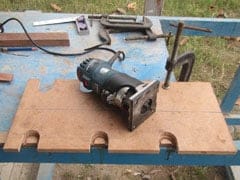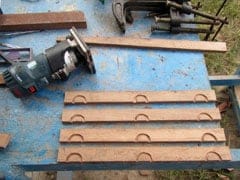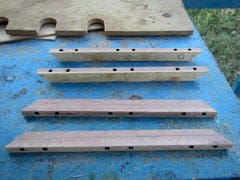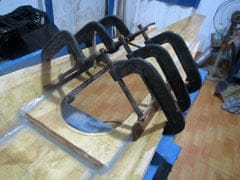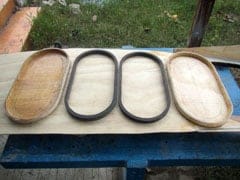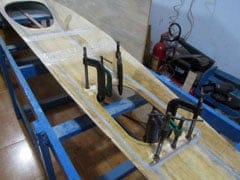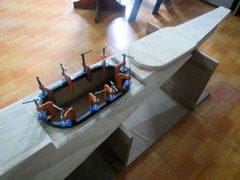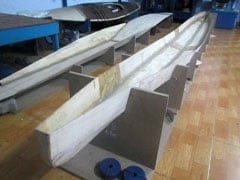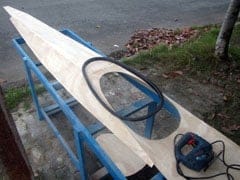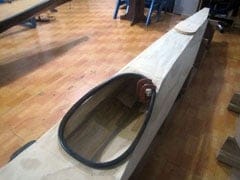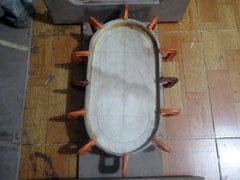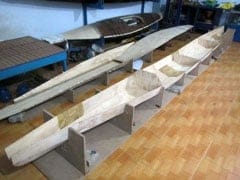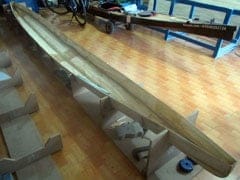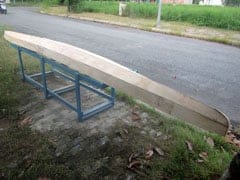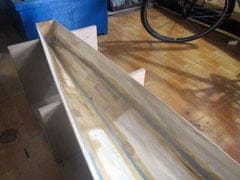Chuyện về thiếu tướng tình báo Phạm Xuân Ẩn (PXA) thì nhiều người đã biết và biết khá nhiều rồi. Nhưng có 1 câu chuyện khác, 1 nhân vật khác cũng ly kỳ không kém, theo một đường hướng hoàn toàn khác.
PXA là 1 điệp viên hạng nhất, điều đó không có gì phải bàn cãi. Sinh ra trong 1 gia đình công chức thuộc địa cao cấp, 1 địa chủ giàu có, được ăn học đàng hoàng. Tham gia CM năm 45, kết nạp Đảng năm 53 bởi chính Lê Đức Thọ, ông trùm nội chính VN, được hướng dẫn bởi bác sĩ Phạm Ngọc Thạch, 1 nhân sĩ được ông Hồ hết sức yêu mến và tin tưởng, được hỗ trợ và chỉ đạo từ Mười Hương, Tư Cang… những nhân vật tình báo chuyên nghiệp (chuyên nghiệp hiểu trong ngữ cảnh VN, chứ chưa thể so với CIA hay KGB được). PXA là 1 điệp viên hạng nhất trên mọi phương diện, định hướng hoạt động tình báo chiến lược từ sớm, được tổ chức gởi đi Mỹ học, làm việc cho những thông tấn xã hàng đầu thế giới như Time và Reuter, có quan hệ với tất cả những nhân vật tinh hoa, chóp bu của giới quân sự và chính quyền miền Nam, các nhân vật tình báo hàng đầu của tất cả các bên như William Colby, Edward Lansdale, Lucien Conein, Bs. Trần Kim Tuyến…
Còn Nguyễn Văn Minh (Ba Minh – NVM) sinh ra trong một gia đình nghèo khó đông con, chỉ mới học hết lớp 5, gia cảnh khó khăn và sức khoẻ kém, đã từng muốn vào chiến khu tham gia CM nhưng không thực hiện được (cũng vì lý do sức khoẻ). Cho đến năm 54, cái gọi là “hoạt động CM” của ông chỉ dừng lại ở mức “cảm tình viên” ở cấp quận, huyện, chủ yếu là cung cấp những tin tức thuộc loại làng nhàng. Hoạt động tố Cộng, diệt Cộng của Ngô Đình Diệm những năm 55, 56 làm nhiều tổ chức, đường dây bị vỡ, NVM mất liên lạc suốt gần 10 năm. Một số lần đường dây được nối lại, nhưng rồi lại đứt. Những hoạt động của ông giai đoạn đầu chưa thể xem là tình báo, chỉ mới ở mức độ thông tin cấp thấp. Năm 55, ông học đánh máy chữ, chủ động bán nhà lấy tiền hối lộ để được vào làm nhân viên đánh máy ở Bộ tổng tham mưu chế độ cũ, hàm “thượng sĩ nhất”. Đây là bước đi đầu tiên chứng tỏ ông có một kế hoạch, một bài bản để làm tình báo chuyên nghiệp.
Trong suốt 18 năm, từ 1955 đến 1973, NVM tìm cách nối lại đường dây liên lạc với tổ chức, nhiều lần không thành công. Một số lần thành công thì cái vị trí, cấp bậc quá thấp của những người trong đường dây làm cho những tin tức của ông không được đánh giá đúng, mặc dù theo như lời NVM, ông đang “ngồi trên một núi vàng”, vì rõ ràng cái vị trí dù chỉ là nhân viên đánh máy trong Bộ tổng Tham mưu cho phép NVM tiếp cận với những thông tin thuộc loại tối mật. Không mất kiên nhẫn, trong suốt 18 năm đằng đẵng, NVM tìm cách liên hệ và chờ đợi cái ngày mà người ta đánh giá đúng những thông tin mà ông có thể cung cấp! Không biết chắc là vì những lý do gì, nhưng mãi cho đến cuối năm 1973, mạng lưới điệp báo A.3 mới chính thức được thành lập, và 1 dòng chảy thông tin trực tiếp từ Bộ tổng Tham mưu được hình thành. Người ta bắt đầu đánh giá đúng về giá trị của tình báo viên NVM, dù chỉ trong khoảng 1 năm rưỡi cuối cùng của cuộc chiến.
Nhà nghèo với 10 đứa con, lương của một “thượng sĩ nhất” không đủ nuôi chừng đó miệng ăn. Nhưng ngày nào ông cũng làm việc 15, 16 tiếng chép tay lại toàn bộ thông tin để đưa ra ngoài. NVM học thêm tiếng Anh chừng 1 năm để có thể copy được tài liệu tiếng Anh, và như ông có nói: tôi ít học, không đủ trình độ để phân tích, đánh giá thông tin, tôi chỉ làm 1 việc nhỏ nhoi, nhưng làm rất tốt! Có lần, tổ chức đưa 200 000 để ông mua chiếc xe máy để tiện cho việc đi lại, liên lạc. NVM mua chiếc xe Honda 67 hết hơn 100 000, trả phần còn lại! Sau này được hỏi về hành động đó, sao không giữ lại tiền mà nuôi 10 đứa con, ông trả lời: “tôi không bán tin, tôi cũng làm CM như các anh thôi!” Cách trả lời cho thấy ông ấy hoàn toàn ý thức về vai trò cũng như giá trị của một điệp viên hạng nhất! Chất lượng của những thông tin ông ấy cung cấp không phải bàn cãi, khi sau 75, người ta thăng anh “thượng sĩ” lên đại tá, và trao tặng danh hiệu Anh hùng lực lượng vũ trang.
Tóm tắt về nhân vật, để thấy rằng NVM không có những gì PXA có: không sinh ra trong 1 gia đình truyền thống giàu có, không được học hành đầy đủ, thậm chí không có được sức khoẻ tốt! Không được “giác ngộ cách mạng” với những nhân vật lão thành hàng đầu như Lê Đức Thọ, Phạm Ngọc Thạch, không được hỗ trợ bởi 1 đội ngũ điệp báo hạng nhất như Mười Hương, Tư Cang, không được định hướng và đào tạo về hoạt động tình báo bài bản từ sớm như PXA. NVM khởi đầu chỉ là một “cảm tình viên” cấp quận, huyện, và hầu như không có một tiếp xúc, định hướng, huấn luyện nào về nghiệp vụ tình báo! Đôi lúc có cảm tưởng rằng, mọi đường đi nước bước là tự ông ấy tính toán lấy, từ việc vào làm ở Bộ Tổng tham mưu, cho đến việc móc nối, chờ đợi 18 năm để người ta có thể hiểu đúng giá trị của mình! Và thậm chí có cảm giác rằng, trong nhiều năm, người ta không tin tưởng NVM, có thể vì ông ấy không nằm trong diện được đào tạo, được “quy hoạch”.
Sự thực là suốt 20 năm hoạt động tình báo, NVM chưa bao giờ là Đảng viên, ông chỉ gia nhập đảng CS sau 1975, 1 bước “thủ tục” cần thiết để có thể thăng ông ấy lên đại tá và trao tặng danh hiệu Anh hùng. Nhiều sự việc nằm ngoài hiểu biết của tôi, hay có điều gì “một nửa sự thật” mà ngành tình báo đến giờ vẫn không thể nói ra!? Trong suy nghĩ của tôi, điều đó gần như là không thể, khi con 1 nhà lao động nghèo ít học, không có được bất kỳ tiếp xúc gì với các thành phần “lý tưởng”, “tinh hoa CM”, gần như không được hướng dẫn, hỗ trợ bởi một tổ chức! Gần như là đơn phương, đơn tuyến, tự mình vạch ra đường đi nước bước, tự mình liên hệ và chờ đợi để người ta hiểu đúng về giá trị của những thông tin mà mình cung cấp! Lòng yêu nước “thuần thành” hay còn điều gì khác!? PXA đã là 1 câu chuyện ly kỳ, NVM là 1 điều kỳ diệu! Dân tộc VN tồn tại được qua nhiều biến động của lịch sử vì có những điều kỳ diệu chưa thể được lý giải đầy đủ như thế!

